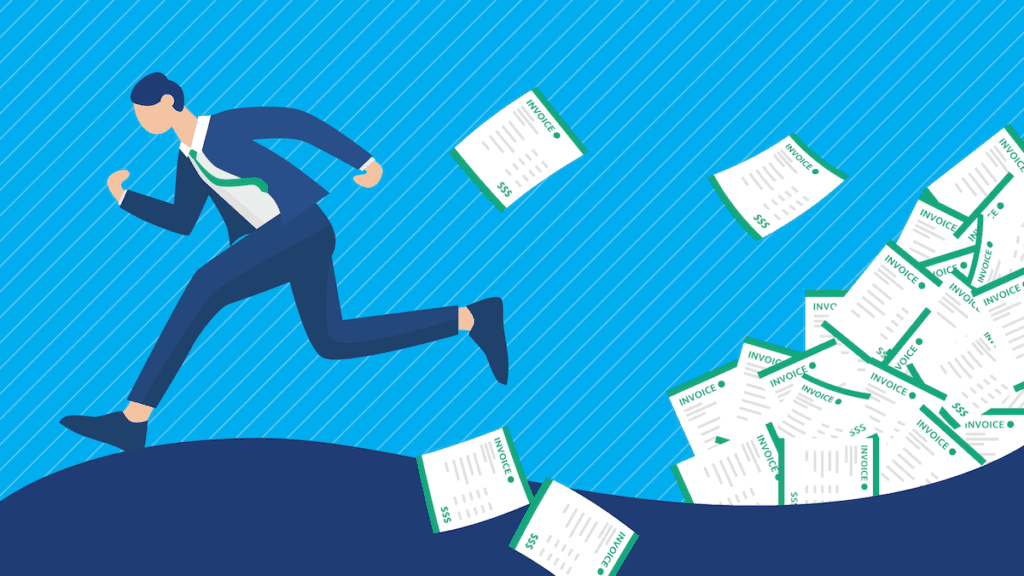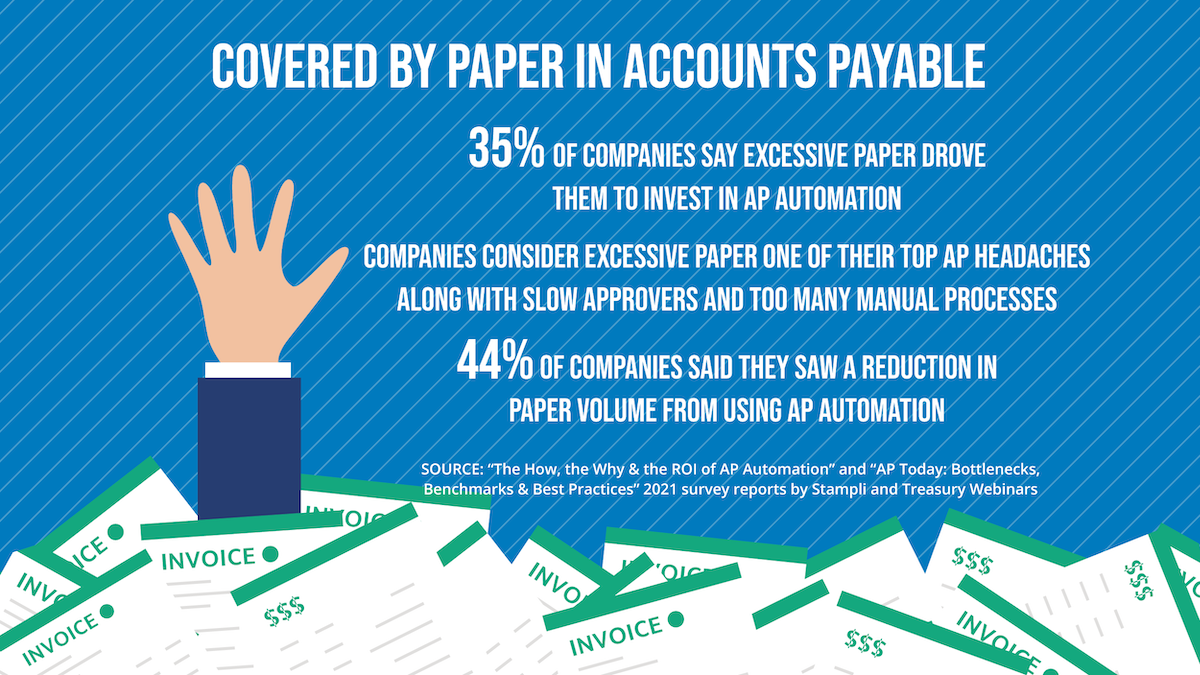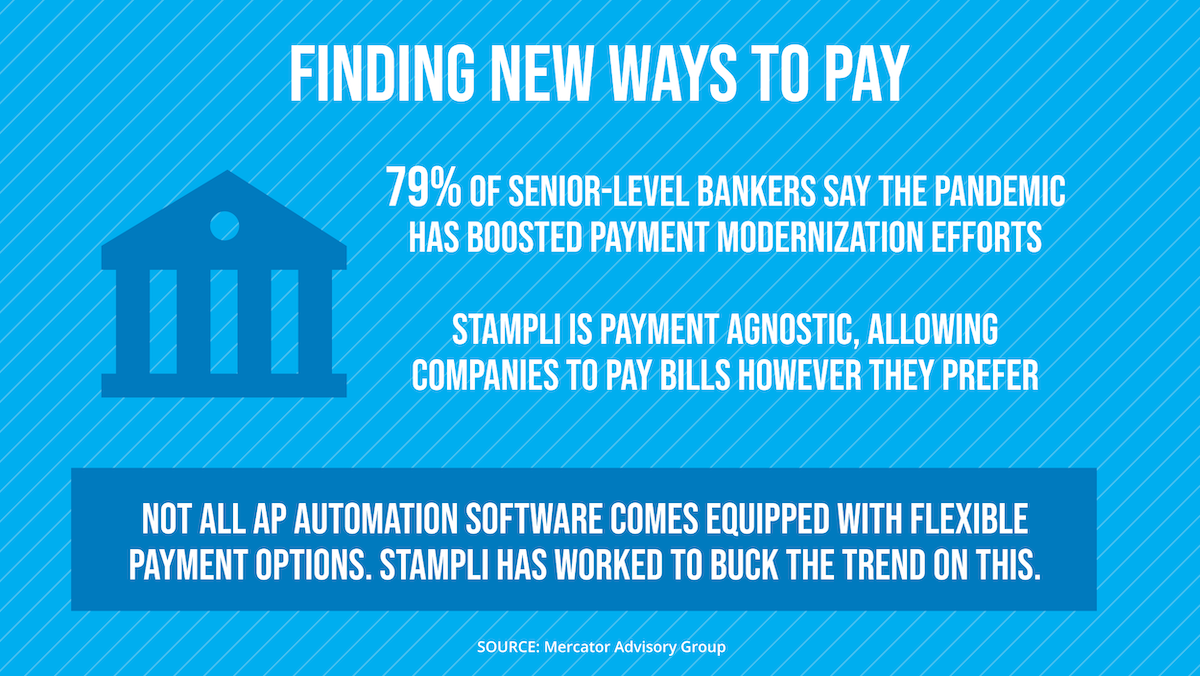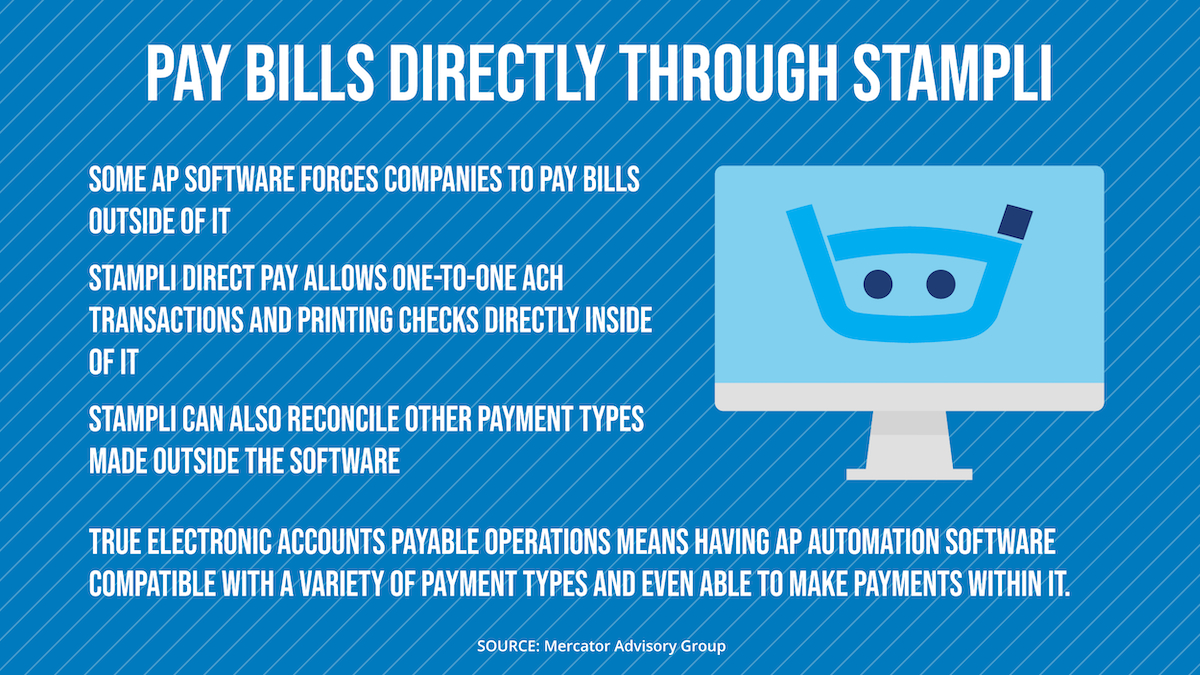Electronic Accounts Payable: How to Ditch Paper Once and For All

In business, paper is resilient if nothing else.
Recent data from a survey by Stampli and Treasury Webinars found that 40% of companies were still receiving paper invoices. Many companies are still mired in other paper-based accounts payable processes such as printing out emails from their suppliers, placing invoices in manila folders with purchase orders and receipt reports, and even occasionally still writing in physical general ledgers.
If businesses want to, however, the time is ripe for them to upgrade to electronic accounts payable operations. Today, we’ll explore how to make this happen, with basics about moving on from paper, which electronic systems are needed, and how Stampli can help companies enjoy an array of electronic accounts payable functionality before they know it.
Basics of Moving on From Paper-Based AP Practices

First, let’s look at some basics of moving on from paper-based accounts payable practices, which are still fairly prevalent in the AP world. Here are three to-dos when preparing to transition to electronic accounts payable operations:
1. Assess How Deeply Paper is Involved in Current Practices
Paper swamps many AP departments, with 35% of companies admitting in a 2021 survey report by Stampli and Treasury Webinars, “The How, the Why & the ROI of AP Automation” that excessive paper spurred them to invest in AP automation. In a different study, “AP Today: Bottlenecks, Benchmarks & Best Practices” respondents listed too much paper as one of their top three AP headaches, along with slow approvers and too many manual processes.
The avalanche of paper isn’t just about being stuck with vendors who insist on mailing in invoices – a problem that good AP automation software can work with, by the way. A lot of companies are still doing the bulk of their accounting work by hand, printing off every email and having the pieces of paper on their desks as they do their invoice processing. In certain ways, it’s not all that different from AP work of 30 years past.
Over the course of the procurement-to-payment (P2P) cycle, the amount of paper can really add up. It’d be one thing if paper were the only option for companies, but AP automation makes it so that most, if not all accounting work can be done without ever holding a sheet of paper.
2. Determine Which AP Functions You Have – and Haven’t – Automated
Accounts payable work isn’t just about getting a bill and paying it. From the time a company makes a purchase to past the point of payment when reconciliations should occur, transactions can generate complex workflows for AP departments. Typically, not everything that happens in the AP lifecycle is completed with the help of an automation solution, even if most of it could be.
Stampli and Treasury Webinars’ report on automation ROI looked at which AP solutions that companies tend to leverage. The findings:
- 68% were using it for payments;
- 66% were using it for invoice management;
- 55% were using it for approval workflows;
- 41% were using it for supplier management;
- 29% were using it for analytics;
- 12% were using it for governance and compliance, which can include meeting Sarbanes Oxley requirements.
For companies not yet using AP automation, it can be helpful to go down the line and look at how many of the above tasks are being done with paper. Other functions not mentioned in that list that can be easily automated include invoice data entry, three-way matching, and checking for signs of duplicate invoices or fraud.
3. Consider What Sticking with Paper is Costing Your Company
On average, it costs around $12 and takes a little over a week to process a single invoice, according to different sources online. And that’s an average of companies who’ve upgraded to AP automation and holdouts who often pay more to keep processing invoices manually. In fact, costs can range as high as $30 without automation.
ERP and AP automation platforms are investments, no doubt and might not be for everyone, such as small companies that don’t process many invoices and can’t justify the costs for electronic accounts payable systems.
But for small businesses with a lot of invoices or midsize companies with over 100 employees and enterprise-level firms with over 1,000, it can be wise to consider what paper-based processes are costing in terms of time and money. There also might be a morale expense, with staff relegated to mundane tasks that AP automation can better handle.
Which Electronic Accounts Payable Systems are Needed

When we talk about electronic accounts payable systems, we’re really just talking about a few pieces of broadly inclusive technology. Here are the basics for companies to consider.
Enterprise Resource Planning (ERP) System
Accounts payable digitization arguably starts with getting an ERP system in place. ERPs are like the central nervous system for business operations, able to connect a myriad of different applications from inventory to supply chain management and provide fiscal forecasts. In an increasingly data-driven business world, ERPs are the lifeblood for essential stats.
In the past, ERP systems have been notoriously expensive to put in place, sometimes as much as several million dollars when they required a custom build on a business’s premises over the course of several months or years. Even in recent years, they can still run $10 million for enterprise-level implementations.
But ERPs are getting more affordable for small and mid-sized firms, with one industry source noting the systems can be as cheap as $75,000. While that still might sound like a lot of money, particularly for a mom-and-pop operation that probably doesn’t not need a full ERP system, ERPs are a tremendous investment for any company that can afford it and wants a keen look at their data.
AP Automation Software
When a company gets an ERP system in place, it might think that it’s solved all of its accounting problems. Truth is, though, while ERP software is vital for modernizing a company’s business operations, there’s still more that can be done through the pairing of an AP automation solution.
While ERP software typically isn’t going to enter data from an invoice, perform three-way matching, or resolve invoice exceptions, that’s something that can be handled by AP automation. Additionally, ERPs may not be able to handle other functions common to certain AP automation systems, such as supporting a wide assortment of payment types directly in the system, creating customizable workflows, and giving end-to-end data visibility to all authorized users.
AP automation systems and ERP platforms have symbiotic relationships. AP systems need ERPs to connect into and the best AP automation solutions strive to be compatible with many different ERPs. But without AP automation, the accounting functionality of ERP systems will only go so far.
Upgraded B2B Payments Technology
Businesses need more ways than ever to pay their bills. This was true even before COVID-19, with technology having evolved significantly over the past few decades to give people a whole slew of new choices like peer-to-peer websites and places they can schedule automated clearing house (ACH) payments themselves online.
But the pandemic has added new incentive, with 79% of executives surveyed recently by Mercator Advisory Group “indicating that payments technology modernization efforts have been boosted by the pandemic.” While this might be thought of in terms of retail and other B2C shoppers having more touchless ways to pay, it’s also been key for B2B, with many AP staff and vendors having had to adjust.
There are two ways businesses can go about B2B payment modernization. Companies can integrate new payment applications on an ad hoc basis, identifying individual websites and apps as they go. Or they can look to all-in-one AP automation software that has built-in payment functionality.
How Stampli Can Pave the Way for Electronic Accounts Payable

For companies ready to ditch their old, manual ways and accelerate their electronic accounts payable efforts, Stampli is prepared to help. Here are some things that help set Stampli apart from other AP automation solutions.
A Seamless Fit with Your ERP
Nothing’s worse than finding what appears to be great AP automation software and learning it’s incompatible with whatever ERP system a company’s invested in. ERP systems are long-term buys, generally in place for 5-10 years, so it’s important to find electronic accounts payable applications such as AP automation software that can work seamlessly with it.
Such is the case with Stampli, one of the most flexible AP automation systems in terms of ERPs it works with. Major systems that Stampli can sync with include Microsoft Dynamics, Oracle, Oracle NetSuite, QuickBooks Desktop and Online, Sage Intacct and 100, and SAP.
Pay However You Want, Including With Stampli Direct Pay
Companies definitely want and need more ways than ever to pay their bills, from the ACH to credit cards to emerging solutions such as ghost cards.
It’s about keeping overhead down, with 46% of companies saying in a 2021 survey report by Stampli and Treasury Webinars, “How & Why Companies Choose Payment Types” that they choose their payment methods based on processing costs. It’s also about responding to a business world changed, perhaps permanently, by COVID-19.
Unlike certain other AP automation platforms that confine companies when it comes to payment, Stampli believes in letting companies pay however they prefer. Customers can pay bills directly through our software, with Stampli Direct Pay able to arrange one-to-one ACH payments or print and mail paper checks directly to vendors. We can also work with companies that want to make other types of payment outside of Stampli.
An All-in-One Electronic Accounts Payable Solution to Make You Forget Paper
When companies opt for electronic accounts payable operations, they shouldn’t have to do it on an a la carte basis or choose an AP automation solution that essentially does this for them, only able to digitize certain tasks. The best bet is to choose a platform that automates as much of the P2P cycle as possible.
Stampli works to provide an automated experience from end-to-end and help make paper a thing of the past in accounting.
Reduce your invoice processing costs by as much as 80 percent. Contact Stampli today.
